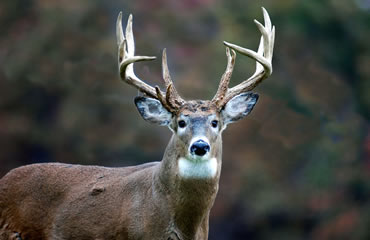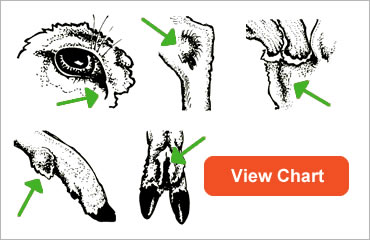Deer Antlers

Why do bucks grow antlers?
Whitetail bucks’ antlers evolved as a weapon system and display mechanism associated with social hierarchy, especially in terms of reproduction.
Are Antlers like bones?
Antlers are the crowning glory of the male white-tailed deer. Antlers are composed of true bone. They grow from pedicels on the frontal bones. These pedicels form the buttons, which are the only antler development of most male fawns.
When do deer get their first antlers?
A buck’s first set of antlers grows during his yearling spring and summer. Annual antler growth begins in mid-March to April. The size of a buck’s antlers depends on his age and nutritional intake.
How are points counted or measured on racks?
A buck’s first set of antlers (or rack) can vary from spikes to as many as 10 points. To be counted, a point must be at least 2.54 centimeters (1 inch) long. This length is consistent with scoring standards.
What happens to the velvet on antlers and why do some antlers grow in weird shapes?
The growing bone—or antler—is full of blood vessels and nerves. Antlers are covered by a hairy skin called velvet. Injuries occur easily to the soft, sensitive growing bone, and accidents during this state cause many deformed antlers. Growth continues through August or September. The bone then hardens. The velvet dries up and is rubbed off or falls off.
When do bucks shed their antlers?
By late December through early January, the supply of testosterone decreases. A separation layer forms at the pedicel, and antlers are shed when they fall off. In March or April, the whole process starts over. Scientists believe it probably starts under the influence of increasing daylight hours and prolactin secretions. (Prolactin is a protein hormone of the anterior lobe of the pituitary gland.)
Deer Glands

White-tailed deer have five sets of external glands:
1) preorbital glands in the corners of the eyes; 2) tarsal glands on the inner surfaces of the hind legs; 3) forehead glands located, as the name implies, on the forehead; 4) metatarsal glands on the outer surfaces of the hind legs; and 5) interdigital glands between the hooves.
Each gland secretes a different scent called a pheromone. The word pheromone [pronounced fair-a-moan] means a chemical substance that is produced by an animal and serves as a stimulus to other individuals of the same species for one or more behavioral responses.
These scents are part of a communication system that identifies individual animals.
Mechanisms for release of glandular secretions are not well understood by scientists. Both hormonal and sympathetic nervous stimulations may be involved.
In addition to the pheromones from the glands, deer use urine as a scent.
Fawns rub-urinate when they are frightened, and older deer do the same in aggressive situations.
During this behavior, the animals rub their hind legs together while urinating on the tarsal glands.
In white-tailed deer, the tarsal glands, interdigital glands and rub-urination serve the same functions. However, scientists have found the metatarsal scent does not produce an alarm reaction and whitetails seem to depend more strongly on behavioral clues, such as the raised tail, than on pheromones as alerts to danger. The preorbital glands are reduced in function to tear glands.